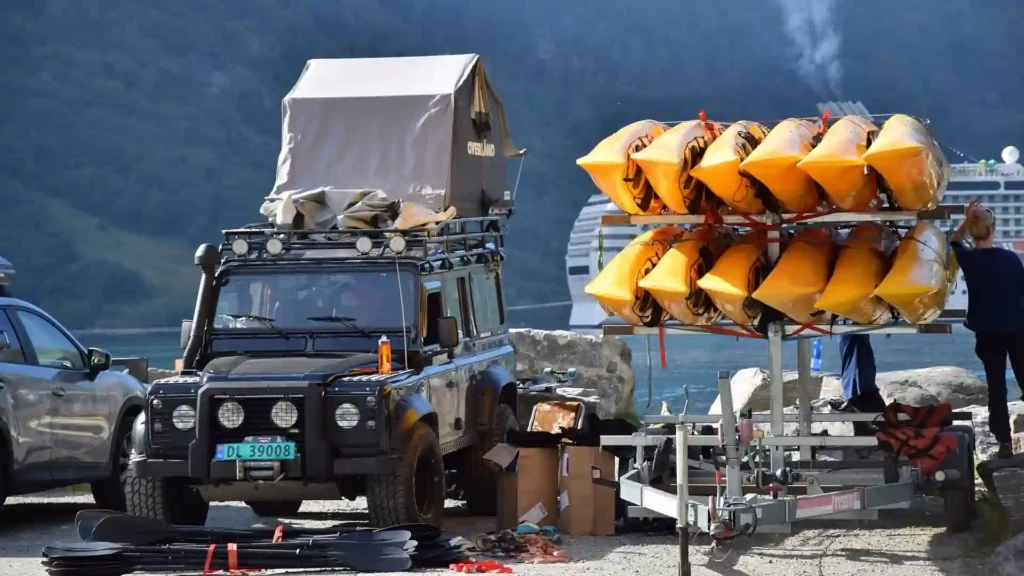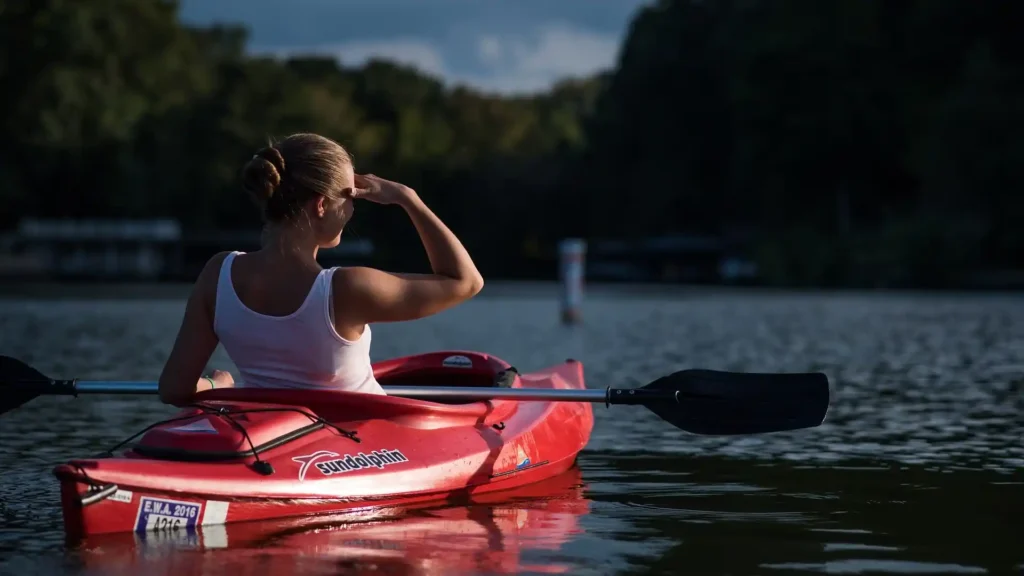Get some preparation before transporting a kayak. It may seem like a straightforward task, but it involves more than just strapping the boat onto a car and driving off. Whether you’re heading to the nearest lake, river, or ocean, safely transporting your kayak requires the right gear and accessories as well as proper knowledge. Here’s a comprehensive guide on essential gear, expert advice, and key safety measures to ensure your kayak reaches its destination in top condition.

Roof Racks and Carriers
Consider a reliable roof rack system; it is the cornerstone of transporting a kayak securely. There are a variety of options available, from basic crossbars to specialized kayak carriers. Choose wisely.
- Roof Rack Systems: Most vehicles have factory-installed roof rails or crossbars that are designed to carry heavy loads. A sturdy roof rack like Thule WingBar or Yakima JetStream can distribute the weight of the kayak evenly, preventing damage to the vehicle and kayak. Thule is often cited by experts for its durability and ease of use, while Yakima is praised for its versatile options that fit most vehicles.
- Specialized Kayak Carriers: If you don’t already have crossbars or need additional security, you can opt for a dedicated kayak carrier. Thule’s Hull-a-Port and Yakima’s JayLow are popular models that allow you to transport one or two kayaks. These carriers include adjustable cradles and straps to ensure your kayak stays in place during travel.
Expert Tip
According to kayak experts, using a foam block system like Malone’s Canoe/Kayak Carrier is a cost-effective solution for those without roof racks. These foam blocks sit on the car roof and securely cradle the kayak without causing damage.
Straps and Tie-Downs
Tying your kayak to the roof rack securely is crucial. Experts recommend using strong, durable straps that won’t stretch or break during transit.
- Cam Straps: These are highly recommended by kayak enthusiasts for their strength and ease of use. You can choose NRS (National River Supply) cam straps for their quality, featuring heavy-duty webbing and durable buckles that hold the kayak firmly in place. The wide webbing prevents indentations on your kayak’s hull and distributes the load evenly.
- Rope vs. Straps: Use straps instead of rope as experts warn that ropes are more prone to slipping and can cause damage if not tied properly. Always use quality cam straps, which offer more control and are easier to adjust.
Expert Tip
When securing your kayak, experts recommend the “Nose and Tail Tie-Down” technique. Attach one strap at the bow (front) and one at the stern (back), pulling them tight to secure the kayak from both ends. This helps prevent shifting during transit.
Protective Padding and Foam Blocks
Ensure your kayak from getting scratched, dented, or damaged. Use protective padding.
- Foam Blocks: If you don’t have a full kayak rack system, get Malone’s Foam Block Kit; it can provide an easy solution. These foam blocks rest on the vehicle roof, cradling the kayak and providing extra protection from abrasion.
- Protective Pads for Crossbars: If you already have a roof rack with crossbars, adding protective padding like Yakima’s Crossbar Pads can help prevent scratches on the kayak and maintain a secure fit.
Expert Tip
Experts suggest an inexpensive and effective system of wrapping the hull of your kayak with foam pool noodles or towels. It is a great way to create a protective buffer when securing it with straps.
Kayak Cart or Dolly
Use a kayak cart or dolly for moving your kayak from the car to the water. This is particularly useful for longer distances or rough terrain.
- Wheeled Carts: Experts recommend the C-Tug Kayak Cart for its stability and ease of use. It features wide wheels that are perfect for sand, gravel, or uneven ground. The Malone HandiRack is also a good option for easily transporting a kayak without worrying about weight distribution.
Expert Tip
According to seasoned kayakers, it’s crucial to choose a cart with adjustable width to fit your kayak’s specific shape and size. The more adaptable the cart, the easier it will be to move your kayak smoothly.
Kayak Covers
Use a kayak cover when traveling on highways to shield your kayak from dirt, road debris. Kayak cover can help protect your kayak for long-term storage and harsh weather conditions, such as rain or UV rays.
- Examples: Outdoor Research’s Kayak Cover offers weather-resistant fabric and a secure fit, while Thule’s Transporter Kayak Cover provides full coverage, protecting your kayak from elements and bugs during transport.
Expert Tip
Many kayak enthusiasts recommend investing in a high-quality cover to prolong the lifespan of your kayak, especially if you’re storing it outdoors for extended periods.
Towing Systems for Trailers
Use a trailer if you have multiple kayaks or larger boats. Kayak trailers can hold multiple kayaks, making it easier to transport them without overloading your vehicle.
- Kayak Trailers: Malone’s XtraLight Trailer and Yakima’s Rack and Roll trailers are popular options that can transport kayaks efficiently without compromising safety. These trailers provide a stable platform, reducing the risk of damage during transit.
Expert Tip
Experts recommend always using a trailer with adjustable crossbars to ensure the kayaks are securely held in place during transit. Additionally, always check the tire pressure and trailer lights before hitting the road to avoid any unforeseen issues.
Safety Measures When Transporting a Kayak
Keep in mind several important safety tips when transporting a kayak-
- Check Your Straps Regularly: Experts emphasize the importance of double-checking your tie-downs before starting your journey. Make sure the kayak is snug, and the straps are not too tight to avoid damaging the hull.
- Distribute the Weight Evenly: Ensuring that the kayak is evenly placed on the roof rack helps prevent excess pressure on one side, reducing the chance of the kayak shifting or causing instability.
- Use a Flag for Long Loads: If your kayak extends beyond your vehicle, attach a red flag or reflective tape to the stern. This is not only a safety measure but also a legal requirement in many areas for overhanging loads.
- Drive Cautiously: When transporting a kayak, especially at highway speeds, the wind can exert force on the boat, potentially causing it to shift. Drive cautiously, avoid sudden lane changes, and take extra care in windy conditions.
- Wear Safety Gear: While this may seem obvious for kayaking on the water, it’s important to wear a life jacket when unloading your kayak near water. Also, use proper gloves to prevent strain from lifting heavy kayaks onto your car roof.
Final Thoughts
Transporting a kayak requires the right equipment, preparation, and safety measures to ensure that the kayak, your vehicle, and the people involved remain safe. As kayak experts recommend, investing in the proper roof racks, tie-downs, and other accessories is essential for a smooth and hassle-free experience. By ensuring you safety, you can focus on enjoying your kayaking adventures rather than worrying about transporting your boat.




